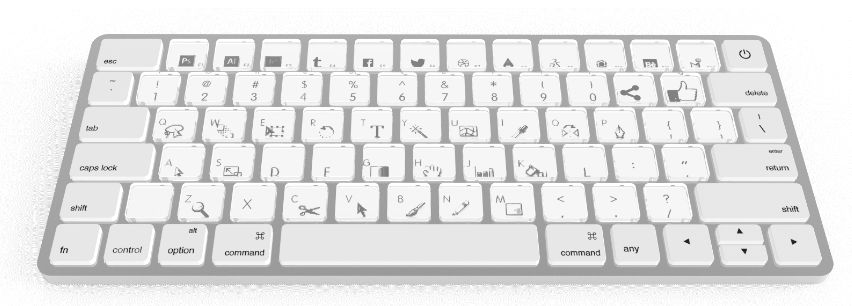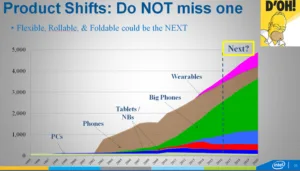 At the OLED World Summit, John Jacobs (once of Apple and also DisplaySearch) of Intel talked about the impact of OLED on IT applications such as notebooks and monitors. OLED-based notebooks have, of course, started to appear in the market from Lenovo, HP and Samsung and Dell has shown an OLED monitor (although it has disappeared since the noisy revelation at CES! – Man. Ed.). Jacobs said that IT applications are evolving to some extent from white-based internet and “Office” environments, to become more colourful and that might reduce the disadvantage that OLED faces in terms of power consumption compared to LCD. OLED also needs to be able to compete with LCD on price and lifetime, but given the trends in OLED developments, it looks increasingly as though OLED will enter the IT market.
At the OLED World Summit, John Jacobs (once of Apple and also DisplaySearch) of Intel talked about the impact of OLED on IT applications such as notebooks and monitors. OLED-based notebooks have, of course, started to appear in the market from Lenovo, HP and Samsung and Dell has shown an OLED monitor (although it has disappeared since the noisy revelation at CES! – Man. Ed.). Jacobs said that IT applications are evolving to some extent from white-based internet and “Office” environments, to become more colourful and that might reduce the disadvantage that OLED faces in terms of power consumption compared to LCD. OLED also needs to be able to compete with LCD on price and lifetime, but given the trends in OLED developments, it looks increasingly as though OLED will enter the IT market.
In his talk, Jacobs said that Intel market research showed that half of consumers would pay $100 extra for an OLED. At the moment, premiums vary from $150 (Lenovo Yoga) to $250 (HP Spectre x360). Intel wants to promote market innovation and also ensures that it doesn’t miss the next wave of development, especially if this turns out to be based on flexible displays.
Turning to the supply side, Jacobs is confident that there will be enough supply next year to provide OLEDs for IT and only if supply hits his low case and demand hits the high side will there be supply tightness, even if Apple goes to OLED.
Finally, he looked at whether OLED makers can profit from supplying IT applications. His calculations show that while the most profit for makers comes from supplying very high end phones, supplying 13.3″ QHD OLEDs could match the revenues per substrate that supplying low end phones can generate. In the long term (to 2025, anyway) his forecast is that OLED will stay more expensive than LCD, but if additional suppliers come in and the premium for OLED can get well below $100, perhaps to around $60. That will expand the market for OLEDs above LCD, although LCD will stay cheaper.
Separately, Michael G. Helander, the CEO of OTI Lumionics, a Canadian company that develops technology for OLED electrodes and OLED lighting, said that it has seen problems with burn in on OLED IT products, with a 3% drop in efficiency in just 80 hours. Given how many hours per week that IT panels are used, Helander said, a big boost in material lifetimes is needed to ensure competitive lifetimes.
Once the lifetime and efficiency issues are solved, the advantages of OLED in contrast, response time and viewing angles will come to the fore.
Analyst Comment
There are some interesting rumours going around that the upcoming iMac Pro refresh might include an OLED-enabled touch panel to replace the function keys. That would, of course, be a very thin and flexible (from a programming point of view) element in the user design. There are also reports that Apple might be working with a start-up, called Sonder, that has a keyboard based on E Ink technology.


